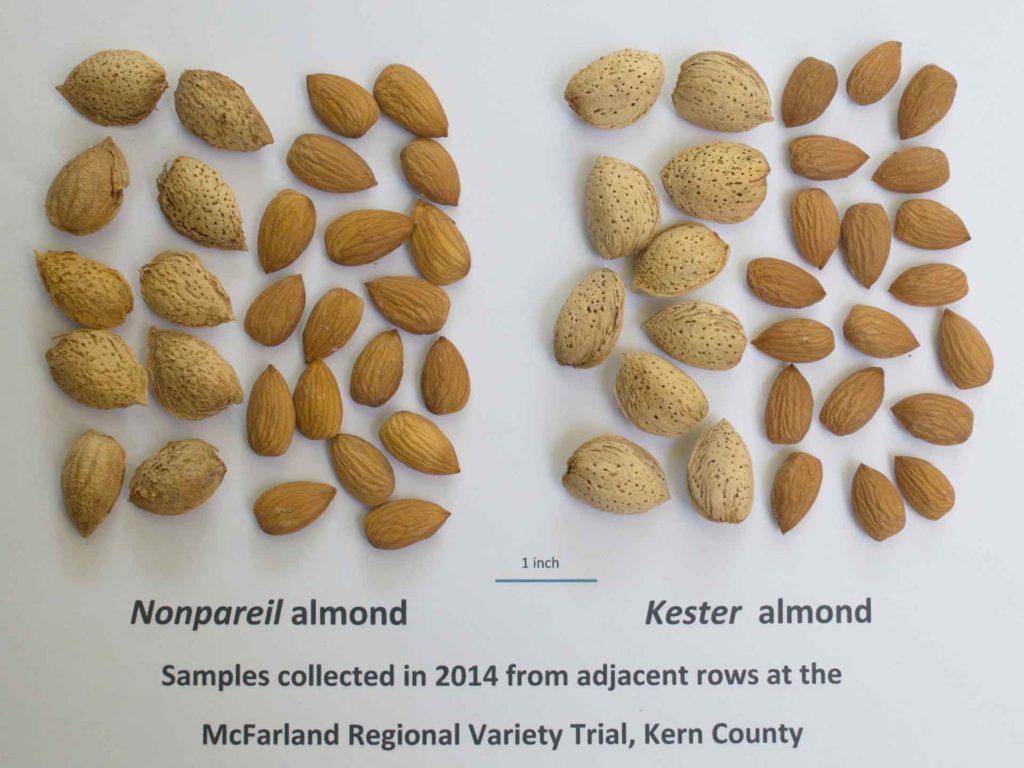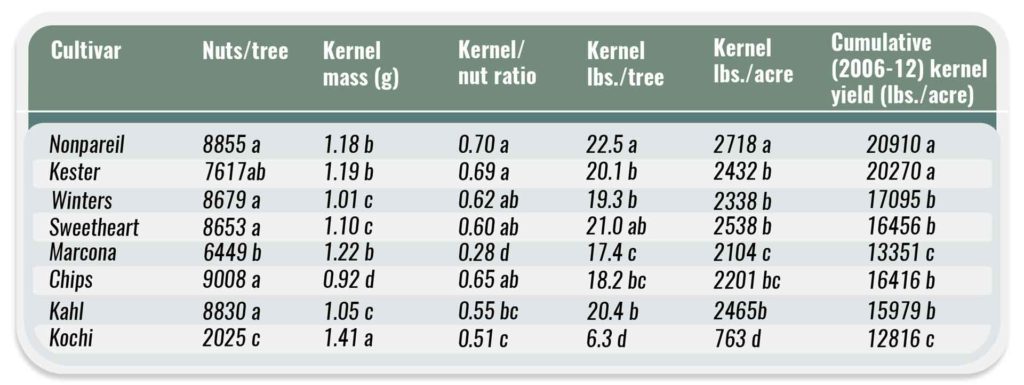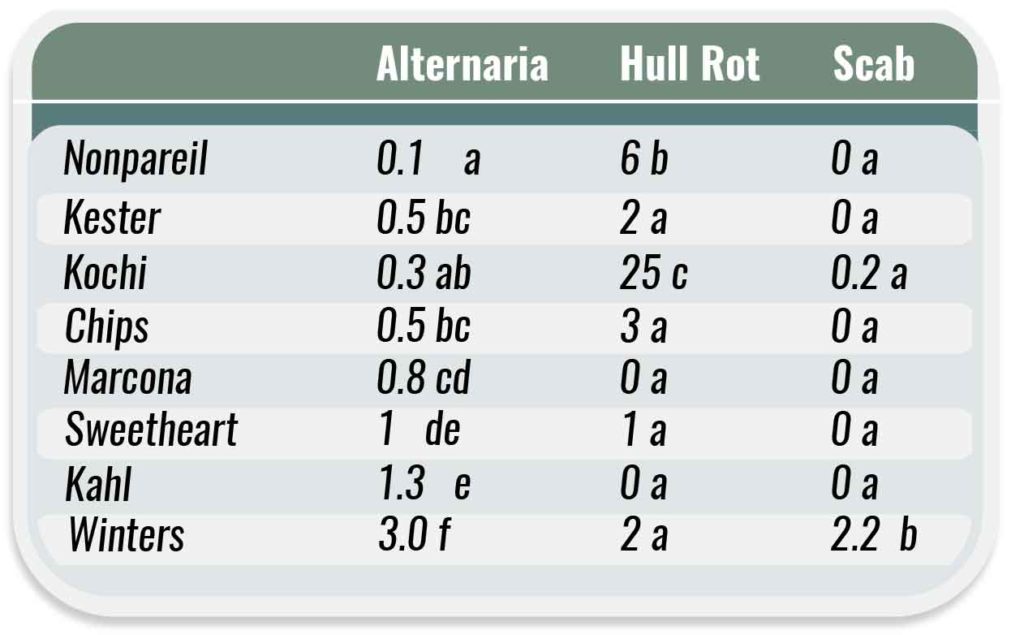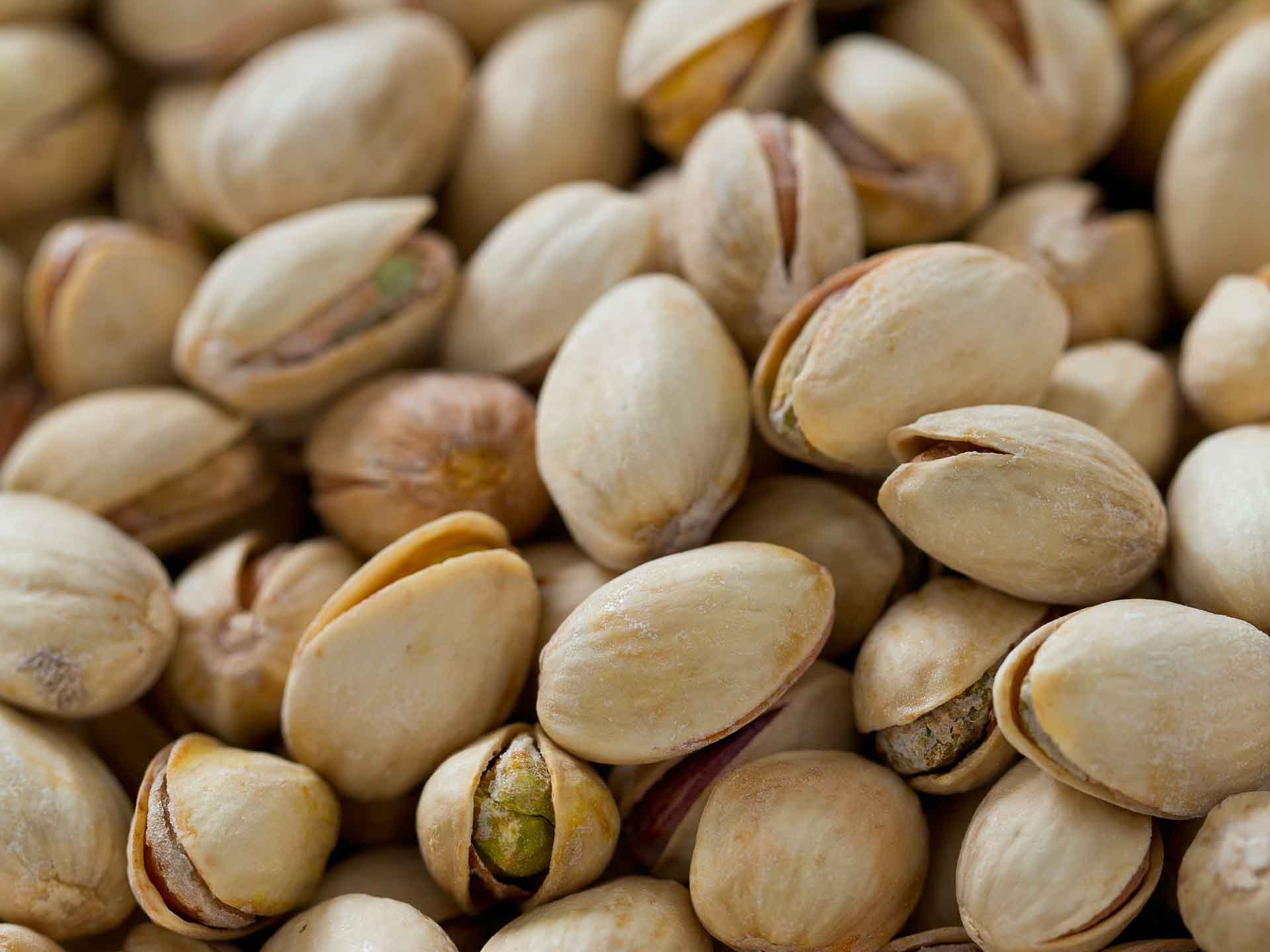
The variety Kester was developed as a pollenizer for Nonpareil that combines good kernel quality and productivity with a later flowering time for reducing vulnerability to flower diseases and frost damage. Kester’s high productivity and later flowering time also make it a promising alternative to the variety Padre in Padre/Butte plantings. Kernels are similar to Nonpareil in shape and size, though the seedcoat tends to be darker and slightly rougher. The seed parent of Kester was Tardy-Nonpareil, a bud-sport mutation of Nonpareil that retains Nonpareil’s good kernel qualities and disease resistance but flowers 10 days after Nonpareil. The Kester tree is vigorous and upright to spreading, being similar to slightly smaller than Nonpareil in final tree size. Production occurs on a combination of spurs and terminal shoots. This growth habit supports high productivity with an open tree architecture that allows greater light penetration and air circulation to the canopy interior, thus reducing vulnerability to blossom, foliar and nut diseases.
Kester Evaluation
Kester was developed at the University of California Almond Breeding Program at Davis, California with long-term support from the Almond Board of California. The program was developed to breed new varieties and germplasm to meet the emerging needs of the expanding California industry. This includes the long-term, regional testing required to identify potentially serious problems in new variety releases before large-scale grower plantings. Towards this goal, Kester has been evaluated for over 20 years in large scale Regional Variety Trials as well as a number of smaller grower trials in the northern and southern Sacramento Valley as well as the northern, central and southern San Joaquin Valley. During this 20-year regional evaluation, Kester showed no major vulnerability to important diseases and remain completely free of the genetic disorder Noninfectious Bud-Failure. Navel orangeworm damage was also consistently low. Nuts are well-sealed at maturity while providing a high kernel-to-nut crackout ratio. Kernels produced quality in-shell, raw and processed, (including blanched and roasted), product. The occurrence of undesirable kernel types, including double-kernels and kernels having multiple embryos was also low, being similar to Nonpareil.

Utilizing Tardy-Nonpareil to Delay Bloom
Utilizing the Tardy-Nonpareil budsport as a parent was successful in delaying bloom time by approximately one week while maintaining good kernel quality and productivity. Bloom begins approximately three days before Nonpareil full bloom in the different Sacramento and San Joaquin Valley growing regions, with full bloom for Kester occurring approximately six days after Nonpareil. Petal-fall typically occurs a week after Nonpareil petal-fall, providing good late-bloom overlap.

Bloom period, including start of bloom, full bloom and petal-fall in the different growing regions was very similar to that of the Butte variety. Like Nonpareil and Butte, Kester is self-sterile but cross-compatible with Nonpareil, Butte, and most major Nonpareil pollenizers. Harvest occurs just after Nonpareil and before Monterey and other mid-to-late season varieties, thus allowing more efficient use of harvest equipment.

Evaluating Yield Potential
To accurately evaluate yield potential, Kester, Nonpareil and several pollenizers were evaluated in a replicated grower trial in the central San Joaquin Valley. Trees were planted in 2004 on Hansen rootstocks in Kern County near McFarland, California. Soils consisted of McFarland loam and Wasco sandy loam which are both Class I soils. The irrigation system was double line drip. Standard tree spacing of 20 feet between tree rows and 18 feet between trees were used for a density of 121 trees per acre. Pollenizers alternated with Nonpareil rows throughout the orchard with all trees grown under standard commercial practices.
Data was collected from 2005 to 2012 for bloom and harvest time, nut yield and quality, and disease and insect damage. The combination of good overlap with later Nonpareil bloom, open tree architecture, high flower-density, and cross-compatibility with Nonpareil and its pollenizers resulted in consistently high productivity over the eight years of evaluation. A high crop density, however, makes the variety vulnerable to alternate-bearing if sufficient nutrients and water are not provided for development of the current season crop as well as the flower bud development for next season’s bloom.
Mature trees under heavy production showed low to moderate susceptibility to scab, Alternaria leafspot and hull rot. The thin ‘paper-shell’ of Kester conferred a high crack-out ratio of 0.69 while a good shell-seal limited damage by navel orangeworm to under six percent for all test years. These characteristics also made Kester a useful pollenizer for mid-to late season varieties, including Butte plantings where it has been planted as an alternative to Padre. [Detailed, multi-year data can be found in annual Field Evaluation of Almond Varieties research reports available at the Almond Board of California website].
Foundation Trees
Virus-free and certified true-to-type foundation trees have been established at the Foundation Plant Services Clean Stock Facility at Davis, California to provide registered budwood to nurseries. The name Kester was chosen to acknowledge the extensive contributions to almond variety and rootstock improvement by Professor Dale Kester during his career in the Department of Pomology at the University of California at Davis.










